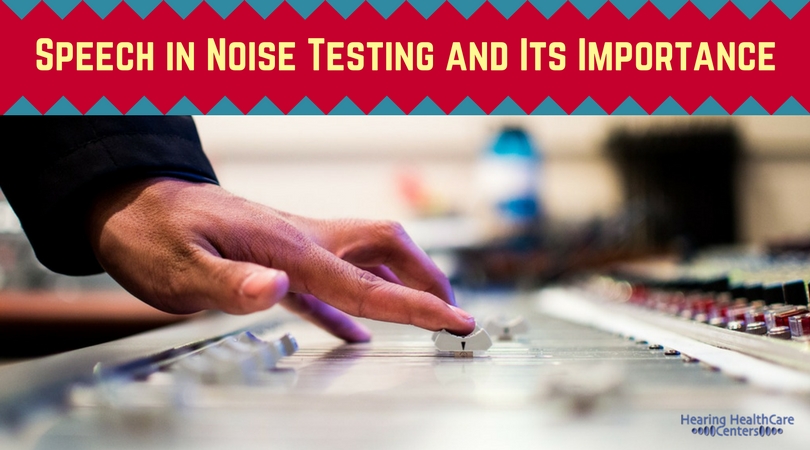
Do you think you hear fine in most situations, but struggle to follow conversation at a party, meeting, or at a restaurant? If you feel you’ve been experiencing this, it might be time to go for noise testing.
First let’s talk about your hearing…
About Hearing and Hearing Loss
Hearing is the result of sound traveling through a complex pathway of cells. The process starts from our outer ear all the way to the hearing and speech understanding centers in our brain. Hearing loss occurs when a portion of those pathways get damaged. If or when that damage occurs, our brains have an incredible ability to adjust and rewire to fill in those gaps. This is the brain’s attempt to allow us to hear normally. But remember, each person often experiences hearing loss differently than the next person. Why is that? It’s because each brain adapts to hearing problems in a slightly different way.
With that in mind, if you suspect you have some kind of hearing loss, it’s better to have a hearing test done.
(Related Article: Auditory Deprivation and Hearing Loss)
Why go for a hearing test?
Traditional hearing tests or Audiograms are the tests where you’re typically asked to “Raise your hand after hearing the beep”. They’re usually done in a quiet, sound proof room with little to no distractions. Most people have had a test like this at some point in their lives. These types of tests are critical for hearing professionals like us here at Hearing Healthcare Centers. It allows us to determine some basic information about a person’s hearing system and processing ability. However, the quiet booth couldn’t be further from real life environments. That can ultimately make test results confusing for you, the listener.
One of the most common complaints we hear as hearing professionals goes something like this…
“I hear everything, but I can’t understand voices when there is background noise”.
The “Cocktail Party Effect”
A study out of the University of Buffalo may help to explain more about this so called “cocktail party effect”.
Researchers state that about 95% of sound input to the brain comes from hair cells in your inner ear. This means that “you can have tremendous damage to inner hair cells in the ear that transmit information to the brain and still have a normal audiogram”. Richard Salvi, one of the researchers in this study, explains that the central auditory system can compensate for significant damage to the inner ear. This happens by turning up its [internal] volume control, partially overcoming the deficiency. However, because their audiogram looks normal, people often leave the appointment with no direction, thinking that “my hearing is normal”, but still experiencing trouble in noisy environments.
(Related Article: Inner Ear Disorders and Hearing Loss)
How We at Hearing Healthcare Centers Do It
At Hearing Healthcare Centers, we will not only test your hearing ability in quiet, we test WITH background noise present. This allows us to give you, the listener, a more relatable measure of your hearing ability. In cases where this type of “hidden hearing loss” occurs, we are able to address the hearing difficulties much sooner. With this information, we can make more accurate recommendations and prognoses for your specific hearing profile.
Addressing hearing loss early not only improves your quality of life, but is essential in giving your brain appropriate access to the sounds in your world. Staying active socially requires us to hear clearly in really tough listening situations.
(Related Article: Benefits of Better Hearing)
Are you finding that simple miscommunications are happening more and more often? Perhaps it’s time to take action and have these otherwise “invisible” hearing difficulties checked out.

